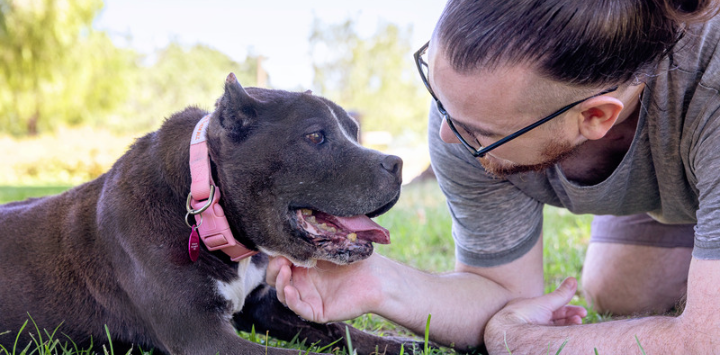
Taking action for animals
If your municipal agency has never come up against at least one piece of legislation that makes saving lives tougher in your community – well, you’re probably in the minority. Municipal shelters are often catalysts for ordinances that help them do their jobs, and there are plenty of examples of powerful legislation that is essential for achieving positive outcomes. Then there are those examples of legislation, some of which have been in place for decades, that stand in the way of implementing lifesaving programs.
Removing, revising, or replacing such legislation is paramount and can be tough where ordinances inspire impassioned voices both for and against. But Best Friends has some powerful digital advocacy resources available to help shelters and rescues build the kind of groundswell of support necessary to overturn legal obstacles. Since April 17 through 21 is National Action Week for Animals, this is a perfect time to make sure network partners are aware of every tool at their disposal to create sustainable, locally driven change for animals.
The grassroots advocacy toolkit
Making change at the legal level takes collaborative action, which is the focus of our grassroots advocacy work.
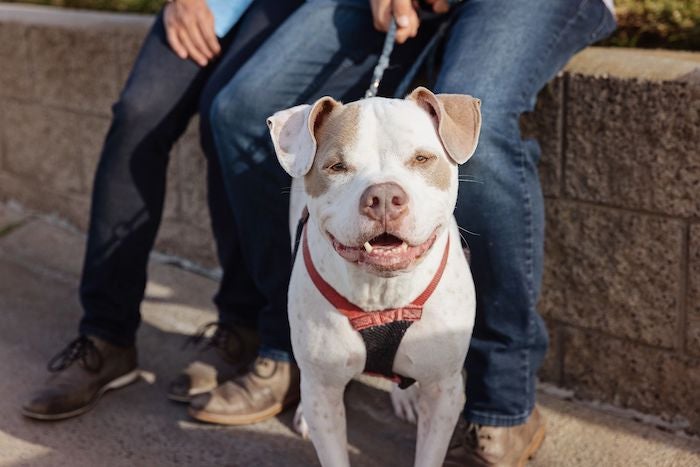 “It’s all about organizing individuals,” says Keiko Berkon, digital organizing manager. “That includes anyone who wants to advocate for animals, loves animals, or just agrees that animals should not unnecessarily be losing their lives in shelters. We have resources on our website as well as various platforms to help users organize actions in their own communities.”
“It’s all about organizing individuals,” says Keiko Berkon, digital organizing manager. “That includes anyone who wants to advocate for animals, loves animals, or just agrees that animals should not unnecessarily be losing their lives in shelters. We have resources on our website as well as various platforms to help users organize actions in their own communities.”
Resources include a municipal guide for lifesaving policies, a series of advocacy how-to videos, and a grassroots advocacy toolkit in both English and Spanish, and a way to sign up for mobile alerts to stay up to date on priority issues in their geographic area. Additionally, the legislative alert page is home base for ongoing actions around the country, where people can send pre-written action alerts to their local government on such issues as shutting down puppy mills, protecting cats who live outdoors in their communities, ending breed-restrictive legislation, and supporting pet-friendly housing. Organizers can also build their own petitions for policy change in their own communities.
“There are petition templates you can customize so they resonate more with people in your community,” Keiko says. “We offer a lot of resources when it comes to creating these petitions and ensuring that they are written in an effective way.”
By completing an action alert, signing or creating a petition, or really doing anything on action.bestfriends.org, people get access to the resources and networking tools of the 2025 Action Team. In addition to digital tools, action team supporters will receive a weekly newsletter that talks about all things grassroots advocacy and tools and tips to help people get started. The grassroots advocacy team is also available to walk them through the process and answer any questions.
Advocacy tools in action
Many network partners are using these tools to force change on issues that significantly impact their ability to save lives. When Souris Valley Animal Shelter (SVAS) in Minot, North Dakota, found itself up against breed-selective legislation, action alerts were able to swing public opinion in favor of cutting the ordinance. Though the ban listed several specific breeds, SVAS’s major concern was its focus on so-called “bully breeds.”
“The city took a hard stand on ‘no pit bulls’ for several decades,” says Shelbi Waters, SVAS executive director. “Previous shelter directors had worked to remove it but failed, mostly due to lack of city council support.”
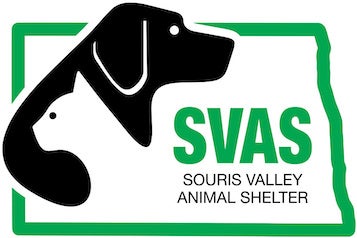 Because SVAS was grandfathered in to operate outside of city limits, that allowed the shelter to work around the ordinance and house bully breed and bully breed mixes for many years. Everything changed in 2022, however, when the chief of police ended the shelter’s ability to use the loophole. It didn’t take long for the change to impact SVAS’s dogs in a predictably horrible way.
Because SVAS was grandfathered in to operate outside of city limits, that allowed the shelter to work around the ordinance and house bully breed and bully breed mixes for many years. Everything changed in 2022, however, when the chief of police ended the shelter’s ability to use the loophole. It didn’t take long for the change to impact SVAS’s dogs in a predictably horrible way.
“It was awful. I am personally a bully breed lover and became involved in animal welfare as a bully breed foster,” says Shelbi, who shares her home with a sweet and gentle senior ‘block head.’ “Every pittie mix we had to turn away devastated me. More importantly, it impacted who we could save.”
Though SVAS still had a population of “mixed bully breeds,” finding adopters outside of city limits was challenging and time consuming. The shelter paid to boost Facebook posts outside of the city, and several nearby small towns hosted adoption events. Still, it was a struggle.
“When I first became the executive director, there was a pittie named Madea who had lived with us for over a year,” she says. “Her little body had sores on it from having to sleep on concrete. Mind you, we were not a no-kill facility at that time, and we were certainly not following best practices yet. This hurt me and obviously stayed with me until present day.”
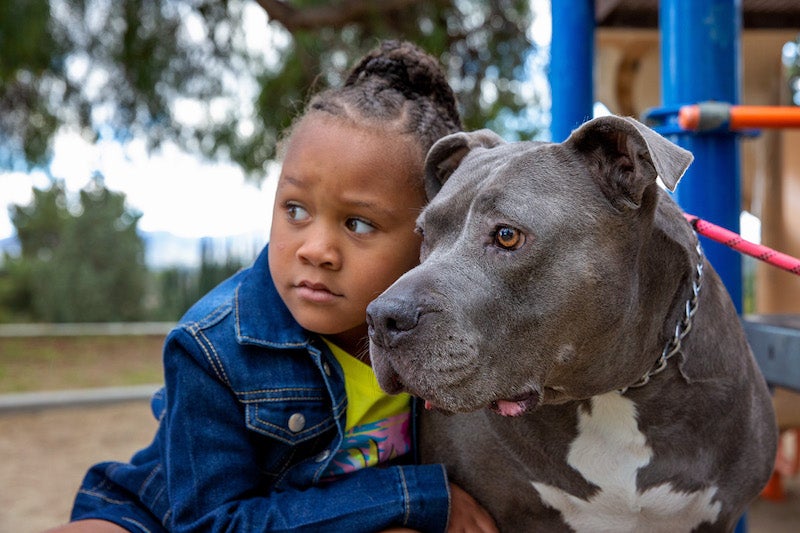 Knowing what SVAS was up against while also being aware that the people of Minot widely supported removing the breed ban, Best Friends regional director Stacy Rogers talked to Shelbi about how she could use action alerts to turn the tide.
Knowing what SVAS was up against while also being aware that the people of Minot widely supported removing the breed ban, Best Friends regional director Stacy Rogers talked to Shelbi about how she could use action alerts to turn the tide.
“Stacy is the reason we were able to connect with the grassroots team on this issue,” Shelbi says. “We were all in North Carolina for a conference and she gathered some key thinkers to explore how we could tackle this.”
Within 24 hours they had a plan in place, buoyed by what Shelbi calls “massive support” from various team members at Best Friends.
“I was in such a negative headspace about not being able to push change,” she says. “It was the grassroots advocacy team that said, ‘Hey, you’ve got this, and we’ve got you. Keep moving forward and get to work.’
SVAS launched a petition page targeting the Minot community as well as people who could advocate for the breed in modern cities without breed bans. The response was remarkable and immediate.
“Thousands of signatures poured in overnight,” Shelbi says. “We really felt the love from all corners of the U.S., but especially from our city.”
The petition was a great call to action to let people know SVAS was working to change things for dogs of any breed, but the shelter received a big boost from City Councilwoman Carrie Evans.
“She presented data on animal attacks to the council that proved dogs labeled as pit bulls were not running around in the city attacking people,” Shelbi says. “The petition motivated people to pay attention and her data brought the case home.”
Creating an engaged community
No matter whether they hold municipal contracts, animal welfare organizations of all sorts provide support for their community and their community’s animals. That means they need to be politically aware and involved to ensure that ordinances are in place which help them do their work successfully.
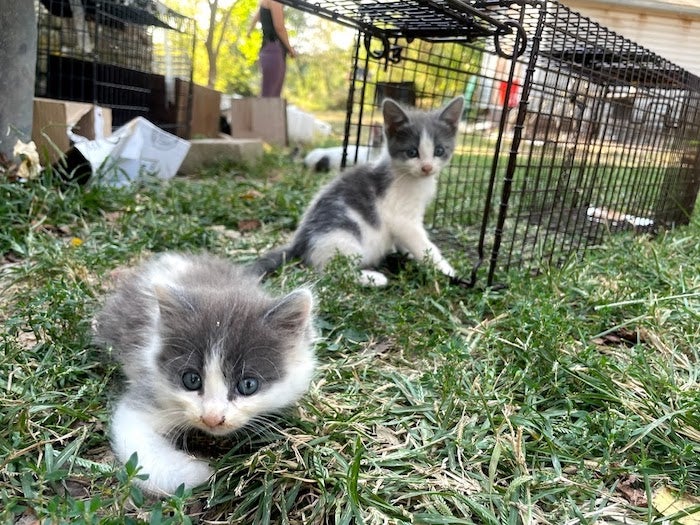 “Shelters and rescues need to be politically active,” Keiko says. “Presenting a petition with a lot of signatures on it to decision-makers says, ‘Hey, look how many community members agree this is a change that is needed in our community.’ That shows that a lot of constituents care about that issue, and that’s important to lawmakers.”
“Shelters and rescues need to be politically active,” Keiko says. “Presenting a petition with a lot of signatures on it to decision-makers says, ‘Hey, look how many community members agree this is a change that is needed in our community.’ That shows that a lot of constituents care about that issue, and that’s important to lawmakers.”
Advocacy tools are also another way to engage members of the community who might not otherwise be able to help out.
“Grassroots advocacy efforts create another way to build that supporter base for your shelter,” Keiko says. “They may not be able to foster an animal, they may not be able to adopt, they may not even be in a financial place to make donations, but they can sign a petition or send an e-mail to their legislator about a particular policy change that will have an impact.
“SVAS is a really great example of how these tools can be used to harness the power of the community for a change that was desperately needed,” she adds. “It also speaks to how much communities really care about their local animal shelters. If you just get the information into people’s hands, they will take it and run with it. There is a whole community out there that can support you if you just let them know how.”

Liz Finch
Senior Writer
Best Friends Network
If you enjoyed this program spotlight, you can find our complete catalog of spotlights here.